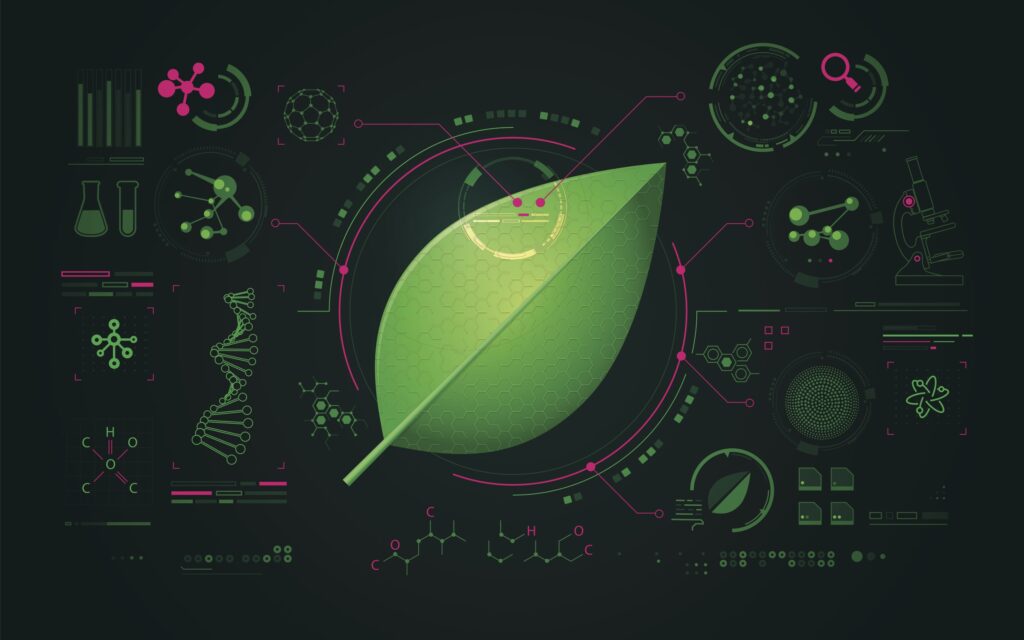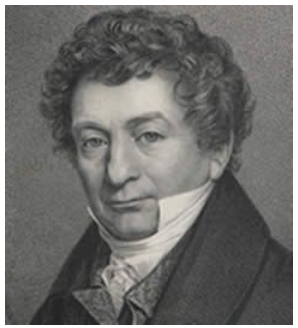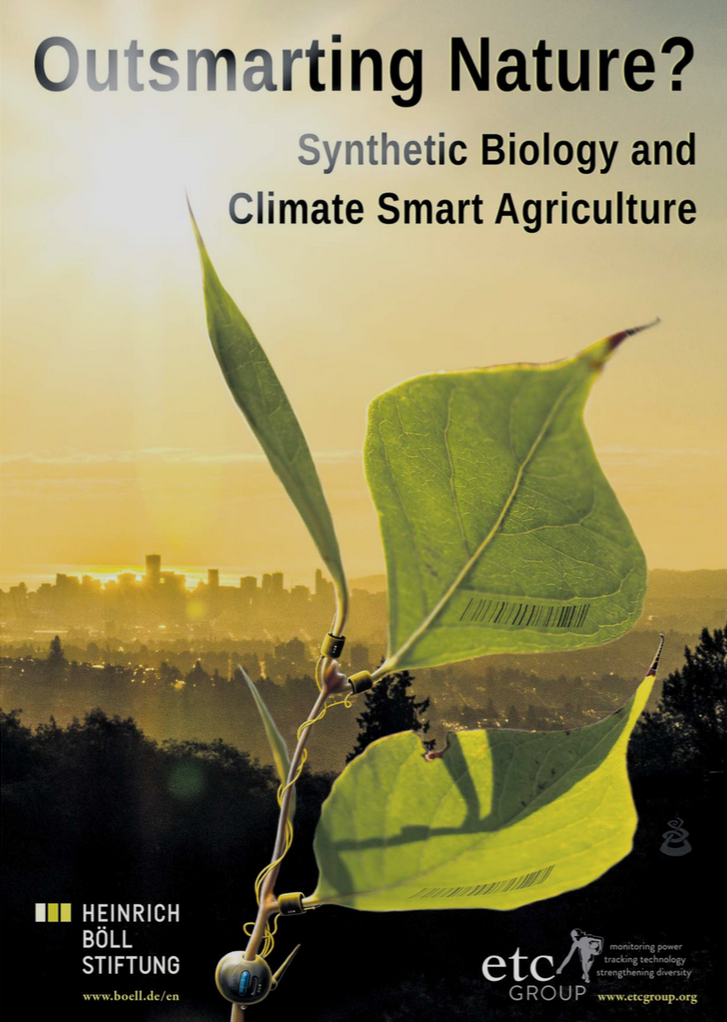
Is it truly equivalent?
It’s a question currently being applied to chemical compounds, formally known as phytochemicals, that have historically been made exclusively by plants, but are now–through recent advancements in genetic engineering—being manufactured by genetically modified yeasts, or protozoans like euglena.
A host of widely used vitamins, amino acids, sweeteners, essential oils, and bioactive phytochemicals are being produced at industrial scale, not by plants grown in fields, but by giant vats of microorganisms genetically altered to crank out useful compounds that they would not naturally be able to synthesize.
This branch of synthetic biology is already revolutionizing the market for food, beverage, and dietary supplement ingredients. There are dozens of “SynBio” versions of common ingredients already on the market, including astaxanthin, resveratrol, carotenoids, cannabinoids, even omega-3 fatty acids.
The use of genetically modified organisms to do the work of plants is driven by the fact that growing and processing medicinal plants can be expensive and labor-intensive. So, chemists and biologists looked for cheaper alternatives.
Are these microorganism-derived compounds truly equivalent to their plant-derived counterparts?
As a chemist, my answer is, yes. From a purely biochemical perspective, they are the same and I can prove that in my lab.
As a human who cares about more than single chemical constituents or the advances of science, my answer is, no. Not really. I do not see them as equivalent, and I will tell you why.
Complexity is Key
Growing up as the son of an herbalist, one of my first jobs was to grind up dried roots and leaves into powders and combine them individually with concentrated alcohol prior to their later extract with hydraulic presses into tinctures. We then combined those tinctures to make a final tincture.
The final formulas were admixtures of 6-8 botanicals containing hundreds of phytochemicals of desire. It was the complexity of those combinations that made the formulas what they were.
This was, and still remains, the Eastern medicine way. All of those diverse bioactive compounds, with their characteristic bitter tastes, are secondary plant metabolites that through centuries of Zoopharmacognosy (watching how animals eat and self-medicate) have become part of our human lives.

At some point in history, someone wanted to “improve” the multi-ingredient botanical medicines that we humans have made for millennia, and decided to try and isolate pure phytochemicals. Written history tells us that this began in 1805, with German scientist, Friedrich Sertürner, who isolated morphine from the opium poppy (Papaver somniferum). That became the first “active principal” to be purified from a plant source.
Simply put, morphine seemed to work much better, and the dosing was more controllable than with the combustion and inhalation of poppy resin.
The Race to Isolate
So began the race to identify, extract, and purify single bioactive compounds from plants. It’s been the underlying driver of the pharmaceutical industry for the last two centuries, and it has yielded important advances. This mindset is increasingly prevalent in today’s dietary supplement industry.
Over the years, some in the industry have taken a liking to this single compound model. Many raw materials suppliers are extracting, isolating, and marketing purified phytochemicals to supplement makers. They do this proudly and unapologetically, trying to be the newer, more refined versions of traditionally used herbs, complete with clinical studies backing up functional claims. Ringing a big pharma bell yet?
Chemically, SynBio ingredients are equivalent to their plant-derived counterparts. But there’s more to an herbal medicine than the chemicals it contains. In the economically-driven rush toward SynBio, I hope we do not lose sight of that.
Along the way, the phrase ‘alternative medicine’ was coined to describe the old ways of doing things, including the age-old methods of preparing herbal tinctures. But really, it is these new methods—the isolation of single phytochemicals—that is the “alternative.”
And there are downsides to our over-reliance on isolated, purified compounds, as even a cursory look at the astonishing rates of serious drug-related adverse events will show.
New Page in Old Story
The use of genetically modified organisms to do the work of plants is simply the latest chapter of this story. It is driven by the fact that growing and processing medicinal plants can be expensive and labor-intensive. So, chemists and biologists looked for cheaper alternatives.
Without going into great detail on the pros and cons of basic GMO technology, it is important to understand that the arguments in favor of GMOs are largely economic. Genetic alteration makes plants (and animals) bigger, better, faster, and more resistant to the challenges of farming today whether that be extreme weather from climate change or pests.

And the arguments against GMOs basically boil down to the hard truth that we simply don’t know what these organisms will do in the long term—how they will mutate over time, how they will impact wild type organisms, and how they will reshape ecosystems.
Like “Killer Bees’, there is concern that these new genetically modified organisms, plants or animals will breed and forever change the plant and animal kingdom. There’s also the specter of unanticipated health issues down the long road.
GMO, or Not?
According to official and widely used industry definitions, plant compounds produced by genetically altered yeasts or euglena cells, are not considered “GMO” ingredients because those organisms do not end up in the product that goes to market.
But the reality is, chemists are making minor changes to the genomes of these organisms, engineering them so they will produce secondary metabolites once found only in plants. The pros and cons of this method are more or less the same as the GMO arguments because this method is a child of GMO technology.
Along the way, the phrase ‘alternative medicine’ was coined to describe the old ways of doing things, including the age-old methods of preparing herbal tinctures. But really, it is these new methods—the isolation of single phytochemicals—that is the “alternative.”
Again, the arguments in favor of SynBio are mostly economic: with SynBio, we can produce tons of chemicals, formerly known as phytochemicals, in controlled industrial warehouses without further depleting the soil, using precious water, or exploiting indigenous people. You can now obtain ginsenoside or curcuminoids or—name your favorite plant chemical– without ever planting a seed or cutting a stem.
The arguments against SynBio are mostly socioeconomic, with a side of fear of the unknown.
Millions of farmers whose livelihoods revolve around growing medicinal herbs and nutrient rich plants could be left without jobs if SynBio becomes the norm in the herbal industry. Entire economies will be disrupted.
If that isn’t enough to worry about, the process of creating GMO yeasts or GMO euglenas still carry the original risks inherent in any sort of GMO endeavor: the modified organisms might escape the fermentation tanks, get out into the surrounding environment, and forever change the population of yeast or euglena.
SynBio vs Synergy
But let’s return to the question, ‘Is it equivalent?’. As a chemist, caffeine is caffeine regardless of whether it is a secondary metabolite of green tea, synthesized in a lab, or produced by GMO yeast or euglena.
It is technically possible to differentiate organically synthesized caffeine from naturally occurring caffeine in green tea. But if the compound is produced by a living organism, GMO or not, and it is in pure form, there should be no detectable differences in functionality, as a single chemical.
But we need to consider the so-called entourage effect. Before this term was popularized by the clever marketers of cannabis-derived substances, herbalists used to call it the ‘synergistic effect.’ It means that all the phytochemicals of a medicinal plant working together are responsible for the observed therapeutic effect. It’s not just one ‘superstar’ compound working alone.There’s more to a medicinal herb than its purified phytochemicals. Herbalists still generally rely on this principle.

Caffeine is one phytochemical in a family of others called xanthines. I love my xanthines. They help me write late into the night. I get mine from Yerba Mate which tests high in theophylline, theobromine, and caffeine. Coffee tests high in caffeine. The two plants work differently on me. And so would a single chemical, formerly known as a phytochemical, that came from algal cells growing in a factory somewhere.
In the end, I approach the equivalency question with another question: what is the final purpose of the product?
Are we trying to recreate the health benefits of green tea, which has a multitude of phytochemicals that work together for the desired effect? Or are we seeking a new source of caffeine to fortify a bubbly, sugary beverage?
From a legal standpoint the regulators as well as many people in our industry are able to say with clear eyes and untroubled conscience that using modified microorganisms to produce substances normally made by plants is not really “GMO.” It is just something created from GMOs.
Undeniable, are the unknowns that still plague the GMO topic in general. These are philosophical and ethical questions for sure. But they are also practical concerns. Will the numerous countries that have banned GMO crops permit the use of ingredients made by GM’ed microorganisms? Will regulators ever know? Will they be able to tell the difference? Will anyone require disclosure on product labels? From and end-user perspective, does it matter?
Chemically, SynBio ingredients are equivalent to their plant-derived counterparts. But there’s more to an herbal medicine than the chemicals it contains. In the economically-driven rush toward SynBio, I hope we do not lose sight of that.
END
Elan M. Sudberg is CEO of Alkemist Labs, one of the world’s leading contract testing laboratories. Based in Garden Grove, CA, Alkemist specializes in plant authentication, botanical ingredient identification and quantitative analytical services to the food & beverage, nutraceutical, and cosmeceutical industries. Alkemist is one of the only labs in the world that is ISO/IEC 17025:2017 Accredited for all plants. Elan holds a degree in chemistry from California State University Long Beach and has authored numerous journal articles on phytochemistry and analytical techniques for the natural products and nutraceutical industry. He is a board member of AHPA, as well as AHPA’s Education and Research on Botanicals Foundation.







